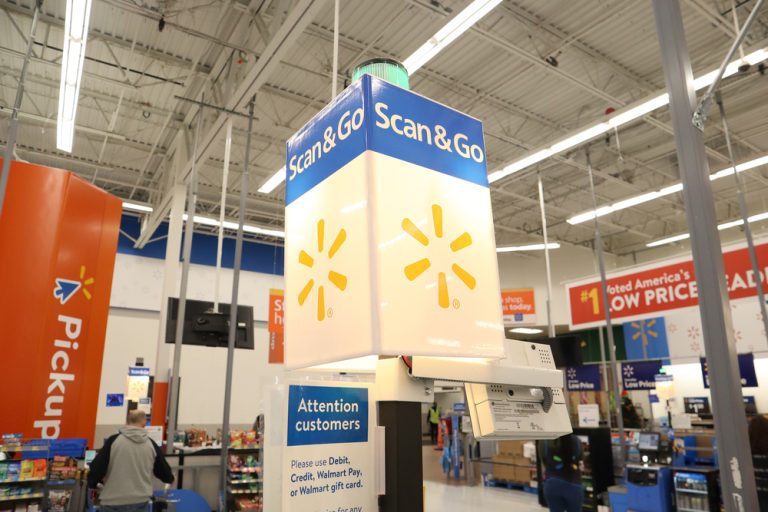Why eBay Doesn’t Want Consumers to Think About Paying
BY PYMNTS | MARCH 8, 2023
|
The phrase “seamless checkout” has been used so much to describe so many things that the meaning has gotten foggy. But given what’s at stake, this murkiness is far from optimal for consumers and merchants, and it’s the kind of thing Deepak Sharma, vice president and head of payments and risk at eBay, spends a lot of time thinking about.
“Our goal is to make sure our users can go through these payments in the [fastest] and most frictionless way possible,” he said. It’s to “make sure people spend the least amount of time thinking about paying for stuff” as payment is incidental to the matter despite its importance.
Sharma’s comments were made as part of PYMNTS’ Nuvei Merchant Payments Optimization Series, in which he also shared how there’s more to seamlessness than just speed, given that the original online marketplace works with 134 million customers in 190 countries.
In fact, Sharma said that in a time of high cybertheft, properly placed friction is a necessary and valuable tool for both buyer and seller, saying that’s a message that all parties involved in a transaction must understand and appreciate.
“When we suspect that there is some fraudulent payment in play, we like to put some friction in front of the users to make sure they can validate that it is them, that their financial data is secure. That, I think, is a balancing act,” he said, because, in many cases, it is true fraud.
Read also: eBay Bids on Luxury Recommerce to Woo Young Shoppers
Authenticity, Trust and Choice
Considering that eBay built a huge part of its reputation on reCommerce, and statistics widely place preowned items at about 39% of its sales volume, “seamless” becomes a function of trusting not just payment security but item authenticity, especially in cross-border eCommerce.
Noting that 2022 “Cyber 5” selling days saw eBay move a record amount of refurbished electronics, he said, “We have made a lot of strides to ensure that the trust of the purchase for the buyer is at the highest level.”
A prime example is eBay’s Authenticity Guarantee program that verifies “used sneakers, watches, bags, and other preloved products, that those products are authenticated by eBay, and you can rest assured that it is the right product that you are purchasing. That’s an important problem to solve in the purchase and payment experience overall,” he said.
That protects the buyer, widening the aperture on terms like seamless to include purchase satisfaction and trust after the fact. But what’s in it for sellers?
Saying that making sure sellers can access their funds quickly and in their preferred currency, Sharma added, “We have invested heavily in making sure our sellers have the choice of getting access to their funds daily, weekly, monthly, even on demand. In some markets, we have enabled access to funds within minutes if you want to transfer that money using a debit card.”
While touting the benefits of buyer payment and seller payout choice, he said that choice for the sake of it “really doesn’t help anybody. You don’t want to throw the kitchen sink at everybody. For us, it’s all about relevance and what matters to you. We want to make sure that we are locally relevant to [each] market.”
However, recalling a collectible Mickey Mantle trading card that recently sold on eBay for $50,000, he defined another facet of “seamless” as the ability to buy high-ticket items by splitting the purchase between cards if need be, saying, “It’s the combination of these two, making sure you’re locally relevant to the customer and making sure that in the context for the item that you’re purchasing, the right form of payment is available to you.”
See also: eBay Buys eCommerce Firm myFitment
Empowering the ‘Accidental Entrepreneur’
Given the 134 million users on the platform, eBay studied its sellers and came up with the notion of the “accidental entrepreneur,” who discovers how simple it is to set up an account and start selling. Here again, the idea of seamless has meaningful nuances.
“The ease of getting started on eBay makes it attractive for customers to come and experiment,” Sharma said. Once they do, it’s eBay’s task to have tools to make sure that sellers can scale and grow their businesses. “That’s where we’re investing healthy as well,” he said, “making sure we can offer access to the right set of financial and value-added services to our customers so they can scale their business effectively.”
That opens yet another side of seamlessness, which is knowing platform users through transaction data selling histories to create easier access to working capital.
He said, “If you are a growing seller, it’s very hard to get access to working capital. We at eBay are in the unique position of knowing what our sellers do at a very deep level so we can provide them with differentiated working capital, embedded within their selling experiences.”
Whether buying or selling, using eBay programs like Authenticity Guarantee, working capital access, or its Refurbished Program that’s keeping waste out of the environment while turning a profit, Sharma said this innovation combines for a more accurate definition of seamlessness.
As part of that, he said it’s important to remember that sometimes “we fail.”
That means “making sure that the messaging of why things are failing is super clear to the users and that they have a way to remediate those errors” supports its payments innovation agenda.
PYMNTS Data: Why Consumers Are Trying Digital Wallets
A PYMNTS study, “New Payments Options: Why Consumers Are Trying Digital Wallets” finds that 52% of US consumers tried out a new payment method in 2022, with many choosing to give digital wallets a try for the first time.
RECOMMENDED
Consumers Want Simplified and Secure Bill Pay Experience
Consumers Buckle Down for 18 More Months of Higher Retail Prices
Consumers Like Payments Choice but Not Payments Clutter at Checkout
Consumers Are More Loyal to Merchants That Protect Payments Credentials
SEE MORE IN: ACCIDENTAL ENTREPRENEUR, AUTHENTICITY GUARANTEE, DEEPAK SHARMA, EBAY, ECOMMERCE, MAIN FEATURE, NEWS, NUVEI MERCHANT PAYMENTS OPTIMIZATION SERIES, ONLINE CHECKOUT, PAYMENTS SECURITY, PYMNTS TV, RECOMMERCE, SEAMLESS CHECKOUT, VIDEO
Grocers Rethink Scan and Go as Consumers Redefine Convenience
BY PYMNTS | MARCH 8, 2023
|
Mobile self-checkout, and specifically, scan and go, would seem a slam dunk for grocers.
It has not worked out that way.
All manner of retail is striving to embrace automated shopping, especially in brick-and-mortar settings. Merchants are streamlining the process of getting items into carts and getting them paid for, especially with contactless payments.
And when it comes to keeping the family fed, PYMNTS data show that most consumers value convenience and speed when it comes to grocery shopping — 77% of them do. And the data shows that 40% of “persuadable” shoppers say that ease and convenience most influence where they choose to shop, which implies that they’ll go where frictionless commerce is a defining characteristic. Since consumers continue to buy most of their grocery staples in the store, it makes sense that a better payment experience would help boost consumers’ loyalty.
Last month, Instacart said it had debuted its first Scan & Pay checkout deployment, where Foodcellar Market, a grocer in Queens, New York, is the first to offer the own-device self-service option to all in-store customers. In terms of the mechanics, the scan/pay offering is geared toward packaged items and pay-by-weight products such as fruits and vegetables. Consumers scan as they go, check out when they are done, and show an employee a QR code as they leave as proof of payment.
Losses in the Aisles
The Instacart example follows news last fall that Wegmans had shuttered its scan-and-go options in store, citing “losses.” In a more recent example, after stating last summer that it would expand scan and go, Hy-Vee said last month it would disable that system, as reported in the Des Moines Register.
Here, as with Wegmans, losses are/were the culprit.
There are other firms that offer scan-and-go functionalities for consumers who wish to sidestep the register at the front of the store. Convenience stores such as 7-Eleven have seen success with scanning and paying and have offered that service for years. Amazon Go, however, in contrast, has been scaling back its cashierless store format.
Despite the mixed track records, the interest is there as roughly 40% of grocers surveyed by PYMNTS think that consumers would be “very” or “likely” to switch if they didn’t offer this option.
Walmart offers a roadmap that might help other firms reduce the incidence of, and potential for, losses. Walmart offers scan and go to its Walmart+ members, which we contend does two things: It limits the “pool” of users to known customers and ensures that customers are paying for the convenience of using this checkout method.
It’s not too farfetched to think that convenience may spur more memberships, cementing a virtuous cycle.
In an interview with PYMNTS last month, Amin Sabzivand, senior vice president of product at Sezzle, noted that “this year we are going to see more adoption overall into self-directed checkouts, but adoption depends on the sector and the market,” Sabzivand said. “For grocery shopping, when the practical benefit is clear to the consumer, the adoption on the consumer side is probably going to be higher versus luxury retail when the customer wants some sort of a luxury experience,” and noted that “people are more comfortable [working] with the device that they have in hand when they know that they have full control of everything,” he said.

































